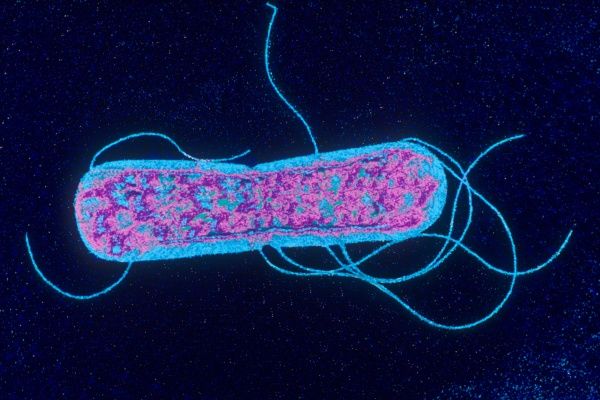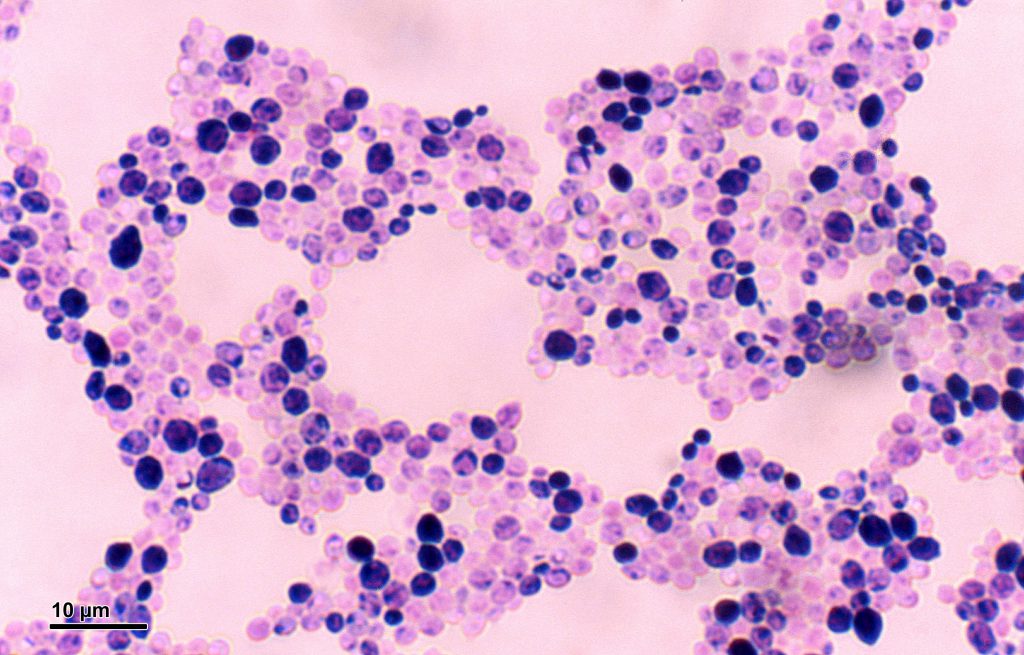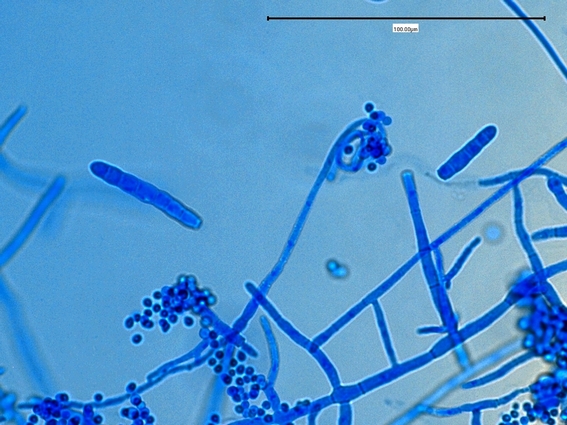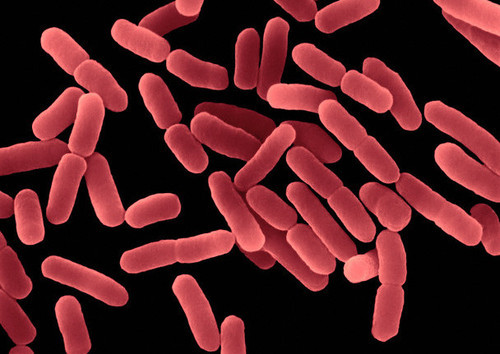Overview
Photocatalytic disinfection is an internationally recognized antibacterial method that can kill nearly all strains of bacteria and viruses, including avian influenza, SARS (atypical pneumonia) and SARS-CoV-2 (the virus causing Covid-19).
It is widely used in places where sterilization requirements are high, such as hospitals, food factories, hotels, livestock farms, institutions, schools, etc.
The photocatalyst has a significant effect on killing all bacteria under the influence of light radiation. The antibacterial effect can be sustained for a long time, during which it degrades bacteria and endotoxins. At the same time, the photocatalyst destroys allergenic substances. Due to its long-lasting effect, it also reduces the level of bacteria in the ambient air.
| Microbial cell | Cell concentration / L | Redox (reduction-oxidation) voltage / V |
|---|---|---|
| Microscopic fermenter | 1 x 10 11 | 0,74 |
| Escherichia coli | 1 x 10 11 | 0,72 |
| Lactobacillus | 5 x 10 11 | 0,68 |
| Bacillus subtilis | 2 x 10 11 | 0,68 |
| Salmonella typhimurium | 6 x 10 11 | 0,70 |
| Cell components | Cell concentration / L | Redox voltage / V |
|---|---|---|
| Released microscopic fermenter | – | 0,65 |
| CoA | 3,7 x 10 3 | 0,65 |
| Reductive coenzyme | 5,0 x 10 3 | 0,40 |
| Cysteine | 2,5 x 10 3 | 0,45 |
| Protoplasm | – | 0,67 |
| HeLa cell | – | 0,65 |
ANTIBACTERIAL EFFECT OF COATING
Photocatalytic coatings have no toxic effect on microbes and cells. It performs the antibacterial function when exposed to light.
In the presence of light, the strong oxidative power of the photocatalyst destroys the cell wall and membrane of the bacteria and interacts with the cellular constituent, which inhibits the activity of the bacteria and eventually leads to their death and degradation. Photocatalytic disinfection involves the following two different biochemical mechanisms.
1. The photocatalyst illuminated by light reacts directly with the cells
In electron deficient conditions, it reacts directly with the cell wall, the cell membrane, and the cellular constituent. Coenzyme A (CoA), which is essential for the vital processes of microorganisms, is oxidized inside the cell into coenzyme A dimer (a double molecule) thereby losing its activity, which stops the cell from breathing and eventually destroys it. In this process, the electron exchange between the killed cell and the photocatalytic coating is performed by CoA. Therefore, the CoA content decreases, and the CoA dimer increases.
2. Indirect antibacterial reaction
The electron deficient state produces active oxygen in water, e.g. hydroxyl radicals. The electron structure of the photocatalyst is characterized by a filled valence band (VB) and a conduction band (CB). By energizing the band gap, an electron is transferred from the valence band (VB) to the conduction band (CB). Then a pair of electrons is generated.
Redox voltage of the photocatalytic coating: +2,6 (vs. SCE, PH=7)
The photocatalytic antibacterial coating breaks down water molecules when electron deficient, resulting in hydrogen gas and hydroxyl radical. The negative electron reacts with the oxygen molecule to form an excess oxide anion (O2-•). The excess oxide anion can further react with the water molecule and produce hydroxyl radical peroxide (•OOH) and hydrogen peroxide (H2O2). Furthermore, the active hydroxyl radicals may combine to form hydrogen peroxide. This cycle continues when light is present.
The active hydroxyl radical, the excess oxide anion, the peroxide hydroxyl radical, and the hydrogen peroxide may react with a biomacromolecule such as e.g. protein enzyme and fat, so it destroys the cellular structure. These react with the cell wall, membrane, and cellular constituent. For example, oxidation reduction material is required for the formation of adenosine triphosphate inside the HeLa cell.
After reacting with active oxygen, the HeLa cell loses its activity and eventually dies. Because the membrane of the cancer cell (T24) is oxidized by the photocatalytic coating and leaks, the positive Ca2+ ion enters the cell and reacts with its internal protein, which causes cell death.
RRC = CRR + ∙OH —> RRCH = CRR
Take for example, •OH. It provides an unsaturated bond or removes its H atom to organic matters.
R3CH + ∙OH —> R3C + H2O
The new free radical causes a chain reaction which leads to a quality change in the bacterial protein and a complete degradation of the lipid. The bacteria are killed instantly. Therefore, the ∙OH O2-∙ HO2∙ H2O2 formed on the surface of the photocatalytic coating may react with the cell wall, membrane, and cellular constituent to destroy the cell.
In colloidal solution, the particles of the photocatalytic coating bind to or are absorbed by the surface of microscopic animal cells.
As for the particles absorbed by the cells, the effect of electron deficiency and active oxygen (∙OH O2-∙HO2∙H2O2) will react directly with cytological histological elements, which improves the antibacterial effect. The UV illuminated photocatalytic coating is an extremely strong oxidation factor, and the reactive oxygen is also very active. As a result, the photocatalytic antibacterial coating can kill, for example, Candida albicans, Escherichia coli, Pseudomonas aeruginosa, Staphylococcus aureus, Klebsiella pneumoniae, Trichophyton mentagrophytes, Salmonella typhimurium, Bacillus subtilis, Lactobacillus bacteria, HeLa and cancer cells (T24), as well as including but not limited to SARS, H5N1 viruses. Thanks to its strong antibacterial and cell proliferation prevention function, antibacterial coating can be used for internal antisepsis and disinfection, water treatment, comprehensive water pollution treatment and photodynamic therapy too.

Salmonella typhimurium

Candida_albicans

Trichophyton mentagrophytes

Bacillus subtilis
In fact, photocatalytic disinfection works continuously between the bacteria and the photocatalytic coating, rather than a single surface reaction as a photocatalytic degradation. Since the active hydroxyl radical is unable to survive for long and cannot enter the cell membrane to destroy the cellular structure, the antibacterial effect is the result of the hydroxyl radical and other active oxygen (O2∙ ∙OOH H2O2). Because H2O2 can enter the cell wall, it not only kills bacteria but also degrades the lipoid-like endotoxin produced by cell death. Furthermore, it can be stable for a long time, so H2O2 may be the most important reaction mediator in photocatalytic disinfection. Of course, there is another active oxygen in the reaction, and H2O2 is not the only reagent. The active hydroxyl radical undergoes strong oxidation inside the cell, which greatly improves its antibacterial activity.
COMPARISON OF DISINFECTANTS
Conventional disinfectants fall into three groups: organic, inorganic, and natural disinfectants. One group of inorganic disinfectants kills bacteria and fungi using its strong oxidation ability, while another group does the same with a metal ion. They are effective in killing bacteria, but the disinfectants themselves, like chlorine, chlorine oxide, are harmful to human health. Metal ionic disinfectants cannot destroy the bacteria that is killed. Thus, they coat the metal ion, which greatly influences its antibacterial efficacy. Organic disinfectants produced by scientific chemistry generally kill bacteria quickly, but they can adapt quite easily to organic disinfectants. However, sterilization produces toxic substances.
| Advantage | Disadvantage | Typical product | |
|---|---|---|---|
| Inorganic disinfectant | Heat-resistant, widespread sterilization, no need for light. | Silver-containing disinfectants easily change colour and the surface contaminated with bacteria will affect the result. | Silver zeolite, phosphate, silver silica gel |
| Organic disinfectant | Quick and extensive disinfection, low price. | Not heat-resistant, bacteria are easily adapted to it, toxic by-product, environmental pollution. | Phenol |
| Natural disinfectant | Highly efficient sterilization, safe for humans, no environmental pollution. | Not heat-resistant and difficult to produce. | Cytosan, sorbic acid |
| Photocatalyst | Extensive sterilization, high efficiency, bacterial and endotoxin degradation, safety, no environmental pollution, harmless to humans. | Light is needed | Photocatalytic sterilization coating |